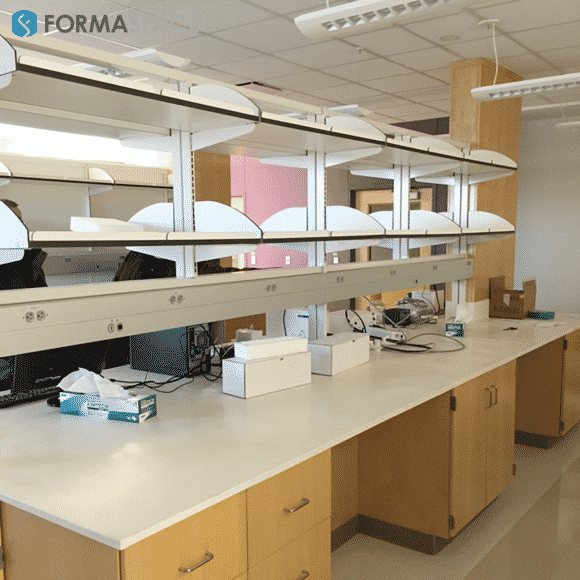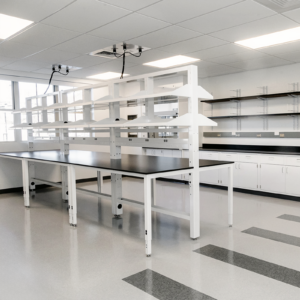Congratulations to you if you’re reading this article, as it means you made it through to the beginning of the last month of 2020, one of the most difficult years in living memory.
Throughout 2020, K-12 school programs found themselves thrust into the crosshairs of high-profile controversies as public health scientists and, government officials, and educational administrators grappled with the challenge of how to cope with unprecedented challenges of the coronavirus pandemic.
Parents, teachers, and students alike have had to cope with sudden school closures, improvised classroom instruction conducted online via Zoom, a delayed return to in-class instruction under strict social distancing guidelines, as well as, in many cases, schools reverting to online instruction when coronavirus infection levels began to rise too quickly.
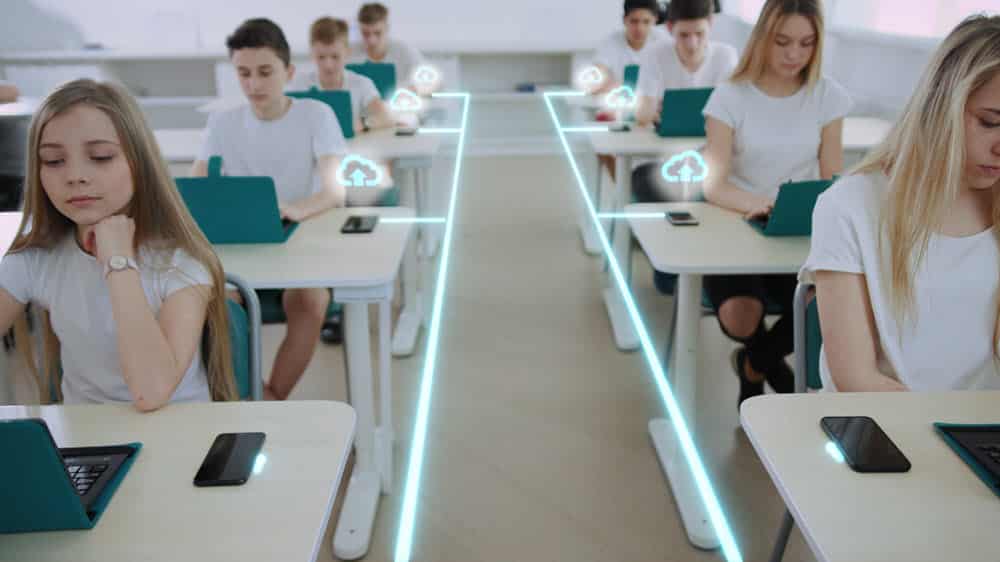
Four Preliminary “Lessons Learned” from Covid-19 School Closures
The sudden closure of K-12 schools during the spring of 2020 shined a harsh spotlight on five structural shortcomings in the American education system:
1. Unequal Access to Study Areas, Computers, and Broadband Internet in American Homes
The sudden switch to online instruction for K-12 students revealed widespread resource disparities in the homes of America’s young students. For example, rural students living beyond the reach of broadband Internet networks either couldn’t participate in online instruction or had to drive to wireless emergency “hotspots” set up by local school districts or library systems to get a working Internet connection. Online instruction also revealed students in poor households either had no fixed address or lacked a suitable place to work (e.g. a desk) and a computer at home. (School psychologists also noted that students participating in online classes observed huge disparities in living conditions among their peers, leading some students to feel shamed by their limited circumstances.) Finally, many of the nation’s estimated 7 million disabled students (14% of the student population) faced additional barriers when receiving online instruction.
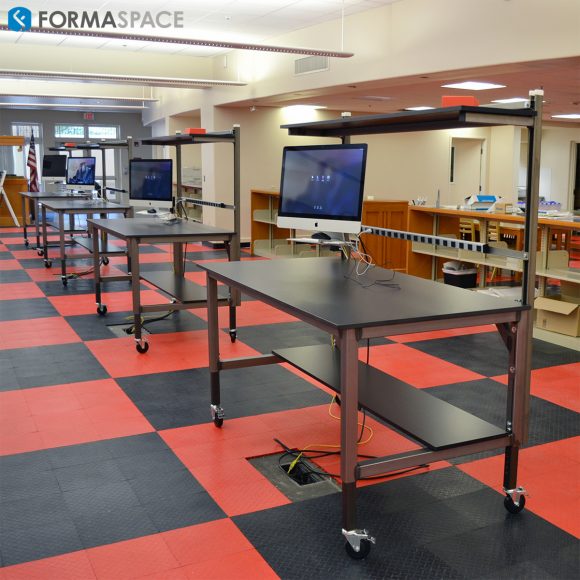
2. The Phenomenon of Disappearing Students
K-12 school systems across the country found student attendance unexpectedly dropped off in 2020, with many districts reporting a 4% or more decrease in the primary and secondary student population. Did the students simply drop out when schools moved to online classrooms? Further complicating the issue of disappearing students is the students who nominally attended online classrooms but failed to show any effort in completing class assignments. Determining where the students went and what can be done to bring them back into the education system is a major challenge facing school administrators. It also creates an unwelcome income challenge for school districts – as many are funded by a formula based on student attendance.
3. Meeting Learning Objectives and Conducting Realistic Assessments and Exams
This brings us to the third major issue with the sudden switch to online classes: are students able to keep up with the normal pace of learning? Many teachers and administrators feel the answer is no; many K-12 students have fallen behind in their learning objectives compared to previous cohorts receiving in-class instruction. The issue, however, is further clouded by teachers having to improvise new ways to assess student progress in an online teaching environment. Standardized tests have been affected as well, with many exams having simply been waved off this year or highly truncated, such as this year’s shorter ACT exam or the abbreviated tests evaluating high school students’ AP credits.
4. Many parents can’t work if their children are not at school during the day
The sudden, unexpected closure of schools also put many working parents in a bind throughout 2020. If their children couldn’t go to school, many parents found they could not go to work. Childcare is too expensive for many working-class families, and even for those who can afford it, it’s not only an expensive financial burden, it’s also difficult to arrange on short notice. As a result, many parents with jobs that did not allow them the opportunity to work at home (and supervise their kids) had to scramble for child care at home or quit their job.
5. Everyone is Stressed Out to the Limit
At the risk of stating the obvious, nearly everyone is stressed out, whether due to extended home lockdowns, fear of the virus, sudden school closures, economic disruptions, unemployment, financial difficulties, or any of the other numerous challenges that have arisen in 2020.
Addressing the Challenges and Opportunities in the Post-Covid World of K-12 Education
The Covid pandemic brought radical change to K-12 schools in 2020 but, as we look ahead, the highly anticipated availability of vaccines in the near future means that now is the time to plan for the future of post-Covid education programs at K-12 schools.
Closing the Attainment Gap to Achieve Better Outcomes in K-12 Education
Based on the latest information from public health authorities, it looks like we can be cautiously optimistic about K-12 schools returning to more normal conditions by the start of the fall 2021 academic year.
By that time, if all things go right, a significant portion of the US population will have been vaccinated – particularly frontline healthcare workers and vulnerable populations such as the elderly or those with underlying health conditions – to create a protective Covid-19 “herd immunity.”
Assuming that is a realistic timetable, now is the time for school districts, state governments, and the federal government to make strategic investments in schools.
In the words of the President-elect, we need to “build back better” – to address the issues mentioned above that were revealed during the Coronavirus pandemic as well as meet the challenges posed by major demographic shifts that are forecast change the face of K-12 student populations in the near future.
Where should we begin?
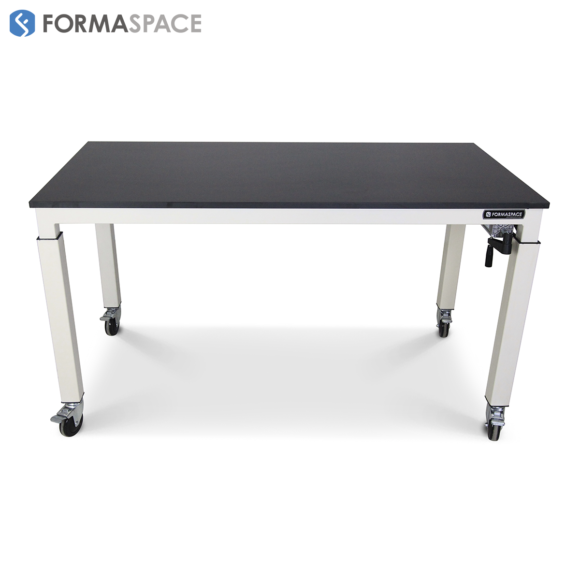
One place to start is to identify best practices, such as the 2018 study from Education Week’s annual Quality Counts report card that identified five common strengths among the top-ranked school districts in the US.
The report found the most successful K-12 schools with the best outcomes shared these characteristics:
-
Robust Economic Environments
Parents tend to earn more in top-ranked states, many of them nestled in the Northeast and Mid-Atlantic.
-
High K-12 Test Scores, Grad Rates
Top performers set a high bar for teaching and learning, and they’re aggressive on accountability and school turnarounds.
-
Relatively High Spending on Schools
Per-student funding tends to be higher in top-ranked states, but it’s not always spread equitably among all schools.
-
Strong Early Childhood Climates
Well-educated parents and broad access to quality preschool are a plus.
-
Widespread Postsecondary Participation
Leading states do well in getting students into and through college.
Critics will immediately point out that “of course, it is easier to achieve better outcomes with students from higher-income families,” and to them, we say, we do not disagree!
It’s always been a challenge to educate students who come from economically disadvantaged households; students who did not grow up speaking English at home; students who were not read books by their parents from a young age; students raised by parents without an adequate primary secondary education; or students who did not enjoy the advantages of early preschool preparation.
The point we’re making is that, according to demographers, school districts need to plan now for a more diverse primary and secondary student intake in the near future, one that is more diverse, with fewer financial resources, and less prepared for educational success compared to previous years.

The bottom line is that the schools will need greater resources to meet these new challenges, and they will need to spend the resources they have strategically to achieve the best outcomes.

Setting Priorities for Federal Education Funding in the New Administration
The beginning of 2021 opens with the inauguration of a new administration and swearing in of a new Congress. How will the federal government address the educational needs of K-12 education? How will it differ from the policy objectives of the outgoing administration under Secretary DeVos?
At the time of this writing, President-elect Biden has not yet announced his nomination for Secretary of Education. But to understand his priorities, we think it’s a safe bet to look at the writings of his wife Dr. Jill Biden, who will continue her teaching career at a northern Virginia college while serving as the first lady in the White House.
In her 2006 Doctorate of Education dissertation, Dr. Biden highlighted five areas in the American education system that needs greater investment to encourage better higher education outcomes:
- Adding a mandatory study skills course for college-bound high school students to prepare them for college-level work.
- Beefing up academic advising programs to help students navigate coursework and career preparation.
- Offer services of an on-staff psychologist to students to provide counseling and other mental health services.
- Provide a wellness center on campus to improve student health and wellbeing.
- Incorporating student centers onto school campuses to provide a place for students to meet.
These recommendations are just as valid today as they were when Dr. Biden wrote them nearly 15 years ago.
(To the last point, we would also add, it’s also important to listen to what students have to say about the education system, as evidenced by this recent non-scientific survey of students in the NY Times.)
Building on the Lessons Learned from Online and Hybrid Classrooms in K-12 Education
Now it’s time for us to offer some specific recommendations for investing in K-12 educational programs and school infrastructure in the post-Covid era.
We’ll start by addressing the lessons learned from online and hybrid classrooms.
The sudden switch to online education around the world was an unexpected experiment; and we offer massive kudos to the teachers, IT professionals, and administrators who were able to enable this unprecedented shift to online learning under extreme time pressures and without adequate advanced planning.
There are parallels to the world of commercial businesses and the many enterprises which suddenly ramped up their operations to sell a far greater amount of their products and services online than ever before.
Neither the online nor the hybrid education model was perfect, and many critics will maintain that only in-class education can provide the ideal environment for student instruction. It’s also clear we need to make significant investments asap to improve the nation’s access to broadband.
However, we maintain that online instruction (and to some extent hybrid education models) at the K-12 may continue to be relevant long after the Covid pandemic ends. Why? The first reason is that online education has taken a firm foothold in higher education, where new online degree programs are gaining greater acceptance. The second reason is that many Americans who have been working at home during the pandemic may want to continue the practice into the future – which means that introducing online study and work skills in the K-12 grades will be part of preparing young students for future success in both college and work environments.
Online and hybrid teaching could also help solve some of the longstanding issues bedeviling K-12 classrooms as well, such as large class sizes.
If some elements of the curriculum are taught online (where class sizes can be very large), then it opens up the possibility of teachers participating in a series of smaller classes where they can offer more “individualized learning” opportunities for students several times a week.
This approach could also encourage the return of enrichment classes, such as theatre and the arts, which have suffered from budget cutbacks in recent years, as well as a renewed emphasis on physical education during the school day, an important strategy for reducing the growing epidemic of childhood obesity and diabetes.
Providing these additional school activities in a post-Covid world could also address some of the issues that arose during the pandemic lockdown, such as the economic hardships faced by parents who could not leave work to provide childcare for students at home during lockdown.
Online learning offers up another advantage to school districts that have struggled to find enough talented STEM instructors. Unlike in-class instruction, which has to take place on-site, online education classes can be conducted from remote locations. This also means that school districts can “share” resources (in this case, teachers) between schools, or even between districts, or beyond. In many cases, it might be advantageous to move to a “team teaching” approach, where a group of teachers takes turns leading the class, while the others answer student questions in real-time or work behind the scenes to prepare future lessons.
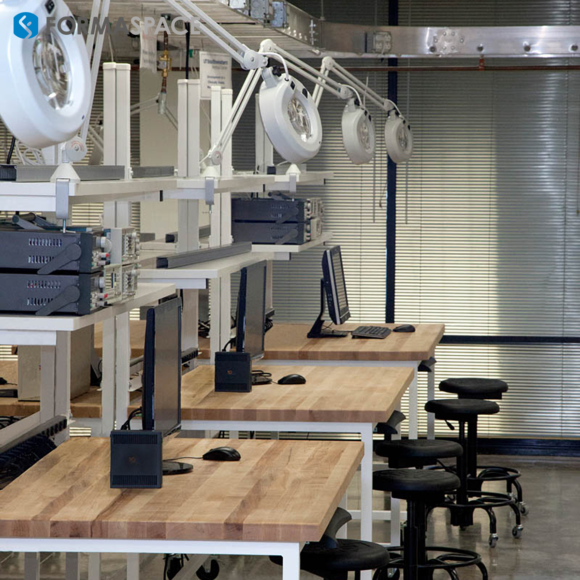
This also broaches the topic of improving the production values and delivery systems for online education curriculum. School districts will not only want to build out better IT departments to service online education programs, they may also want to invest in video production studios for teachers (and students) to create more compelling content for their online classes.
Prepare Students for the New Economy
Many consultants and research groups, from McKinsey to Google for Education to the Brookings Institute, point out that a modern K-12 curriculum needs to be more closely aligned to the technological changes that are coming to the working world so that today’s students are better prepared for tomorrows jobs.
We have long advocated that schools increase their overall investment in STEM education programs to better prepare students for in-demand jobs – in fields such as high-tech manufacturing, for example.
Investing in school laboratories and makerspaces are important too, especially since these resources, which offer critical “learning by doing” skill development, can’t be duplicated at home. Many school districts have found success in creating magnet schools, which can help students prepare for a career in their area of interest, such as medicine, technology, or science.
Education writer Steven Hopper also believes that it’s crucial to continue updating existing STEM curriculum programs to keep them aligned with the latest developments in modern business practices. Hopper proposes adding five new classes to help students acquire skills sets in:
- Product Management
- Agile and Innovative Design Thinking
- Product Development
- Data Literacy
- Digital Communication and Collaboration
To this list, we would like to add a few of our own:
- How to research facts online and how to identify false or misleading information sources.
- How to plan for a career in a job market that will probably change many times during one’s working life.
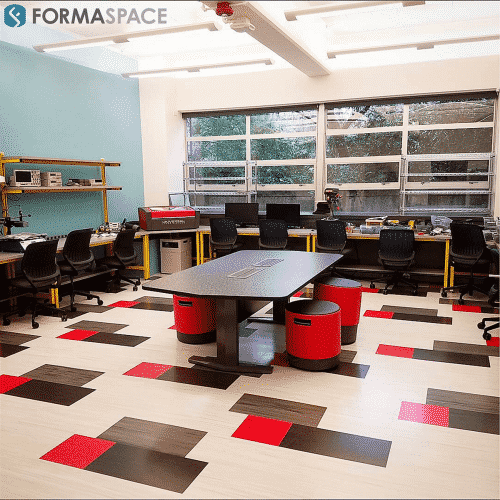
Local Schools Provide Community Services Far beyond the Three Rs of “Reading, Writing, and ‘Rithmetic”
Modern K-12 schools serve their communities in many ways, not just by educating our students. This became painfully obvious this past spring when elementary and secondary schools were suddenly shut down.
Many parents suddenly realized just how many important community services that their local K-12 schools provide. Here is just a sampling:
- Student socialization, cultural norming, and diversity training
- No-cost childcare that allows parents of K-12 students to go to work
- Youth sports programs
- Enrichment programs in the arts, music, and theater
- School lunches at low or no cost for disadvantaged students
- Psychological counseling
- Health services
Hopefully, our newfound appreciation of these services will help build support for increased future investment in these valuable programs that exist outside the “3 Rs.”
Designing K-12 Buildings to Be More Calming, Connected to the Outdoor Environment, Sustainable, Secure, and Resilient
As we’ve mentioned a few times, stress and anxiety are hallmarks of the Coronavirus pandemic – not just among students, but for the rest of us as well.
Even events that are stressful in the best of times, such as high stakes college exams, are becoming even more fraught, as the use of online surveillance “proctors” who deploy webcams to verify students are not cheating increases.
Researchers have identified that stress related to the Covid-19 pandemic is causing extreme levels of stress and mental health issues in high school and college-age students. Cases of clinical depression and anxiety have reached high levels among students, particularly young women.
Architects and designers planning new school campuses will want to take note of this when creating their design programming.
Buildings in the post-Covid era need to incorporate not only include enhanced facilities for one-on-one student counseling, they should also introduce calming environmental design effects and landscaping elements to help reduce stress levels.

The use of biophilic design is one approach to induce calming effects. This can be accomplished by bringing plant life inside the building, or extensive use of window walls to offer views of the natural environment outside, or creating transitional areas, such as atriums and covered patios that allow a step-wise transition from unconditioned outdoor areas into fully air-conditioned interior spaces.
There is widespread precedent for pandemics changing architectural design.
For example, the architects and designers of the Open Air movement from the early 20th century were responding to the concerns about tuberculosis, the 1918 flu epidemic, and polio in the 1930s. We’ve seen a rediscovery of these same principles today, as schools, restaurants, and other built environments have responded by moving functions outdoors, such as outdoor restaurant patio service or classrooms moving into tents outside.
Hopefully, in the post-Covid era, when there is a successful vaccine, the public will once again congregate freely in crowded spaces. But it’s likely there will be a certain hesitancy among us for many years to come, and a preference for more open, highly ventilated spaces, even indoors.
There are several other design elements that school architects and designers need to consider.
The first is a greater need for sustainability. New construction projects of all kinds are facing increased scrutiny for their environmental stewardship: are they energy efficient, can they reduce their carbon footprint significantly, even bring it down to net-zero?
Increased sustainability in the form of reduced energy costs will become even more challenging when trying to increase fresh air ventilation in buildings (normally, the tighter the building, the better the energy efficiency), so we look forward to seeing what creative solutions architects and designers can come up with.
Another object that potentially conflicts with open, calming design elements is the need for increased physical security on school campuses, as a consequence of a series of high profile mass shootings, from Columbine to Sandy Hook and beyond.
Physical security in school design also goes beyond preventing active shooter scenarios; in many cases, schools built decades ago are now found to be located in what are now considered high-risk areas, either due to increased risk from coastal flooding and hurricanes, greater appreciation of the risk of tsunamis (particularly along the northern pacific coast states), wildfire hazards, as well as schools located directly over earthquake faults. (One apocryphal story in California is about a seismographer who says the easiest way to track the San Andreas fault is to map out the locations of school buildings in the state; indeed, the University of California at Berkeley’s football stadium is built directly over the Hayward fault, a branch of the larger San Andreas fault system.)
At a time when investing in new infrastructure may be the best way to restart our economy after the Covid pandemic ends, investing in schools should be near the top of the priority list.
Formaspace Helps Leverage Your Investment in Educational Facilities
Formaspace is a leading provider of custom educational furniture.
Our products are designed and built here in the USA, to your exact specifications, at our Austin, Texas factory headquarters.
If you can imagine it, we can build it.
Find out why hundreds of educational school systems, including a majority of the Ivy League institutions, choose Formaspace furniture for their classrooms, laboratories, cafeterias, makerspaces, and outdoor environments.
Formaspace is a GSA approved vendor and also participates in the TIPS purchasing cooperative.
Find out more. Contact your Formaspace Design Consultant today.


